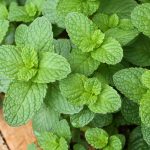Ryegrass can use twice as much water as warm season grasses. So unless you enjoy spending money on your lawn during the winter — and possibly having a sparse lawn next spring — don’t plant winter rye.
Every year we get requests for advice or irrigation variances concerning ryegrass. We pleasantly, but firmly, say no to any type of irrigation variance. And as far as ryegrass goes, we say to never touch the stuff.
Of course, golf courses over-seed (apply seed on top of existing grass) every year, often to the detriment of their existing grasses. It’s their business model to have verdant tee boxes, fairways and greens. But that doesn’t have to be your model.
In fact, unless you enjoy spending money on your lawn during the winter and your sewer bill throughout the following year, then you should consider another model.
What is ryegrass?
Ryegrass (Lolium spp) is classified as a cool season, temporary grass. In other parts of the country, it may be grown together with bluegrass and fescue during the spring and summer.
There are several different species and selections, but only two are commonly used for lawns: Italian (L. multiflorum) or annual ryegrass, and perennial (L. perenne) ryegrass.
Generally speaking, Italian ryegrass is used for agricultural and erosion purposes, while perennial ryegrass more frequently for landscape purposes, but this is not mutually exclusive. Elbon rye is an entirely different species and is used for wildlife feed and cover, as well as for home gardening as an organic method of capturing nematodes.
“Perennial” and “annual” are relative terms. Italian, perennial and elbon ryegrass are all temporary in Texas. As the weather approaches the mid-80s, ryegrass begins to wither away regardless of species.
Why do we view it with indifference?
Putting aside the esoteric arguments of growing a non-native species during a season in which all of nature is dormant, it’s also not a good idea to apply excessive amounts of water on turf that is only temporary. The warm season grasses, i.e., Bermuda grass, St. Augustine grass and zoysia, go dormant to semi-dormant in the winter and require little to no supplemental water. Not so with ryegrass — it may require twice as much water as St. Augustine if the winter is dry. Some homeowners may even fertilize this ephemeral grass.
Depending on the weather, ryegrass may also have a detrimental effect on other grasses. A cool, wet spring will encourage ryegrass to the detriment of Bermuda grass, thereby delaying its early growth. If this occurs over several years, the warm season Bermuda grass may never recover.
There is also some evidence that ryegrass, like other species in the Poa grass family, produce allelopathic chemicals that inhibit growth or are toxic to other grasses. In combination, weather and allelopathy rapidly weaken and thin the existing turf and come April, the homeowner is left with mostly bare dirt. Golf courses frequently have to re-sprig the tees and fairways every 3 to 6 years because ryegrass has weakened the Bermuda grass to such an extent as to deplete the population.
Finally, probably the most detrimental aspect of ryegrass is that during the season it’s growing and using water is the exact same time SAWS is determining your sewer fee for the following year. It’s called winter averaging and SAWS determines your annual sewer fee from the three complete billing cycles that occur from mid-November to mid-March.
Does ryegrass serve any purpose?
Yes, during the cool season ryegrass is an important soil stabilizer for slopes, new construction and new homes. Our warm season turf grasses, whether by sod or seed, do not grow appreciatively during the cool season. To prevent soil from washing away, ryegrass seed is added to bare soil areas.
To initiate germination, ryegrass must have cool temperatures, sun and moisture. In Texas, we don’t begin to seed until the nights are consistently in the low 60s and daytime temps don’t exceed the high 70s. Generally, this begins in early November.
Ryegrass certainly has a place in Central and South Texas landscapes, but with certain exceptions and not over existing lawns.




